#rewilding
Text

#leftism#anti capitalism#socialism#communism#anarchy#earth day#ecosystem#eco#rewilding#environment#ecology#ecofriendly#agriculture#infrastructure#ecofashion#waste
66 notes
·
View notes
Note
hey sorry if this is silly but do you have any advice on planting flowers to help the environment? like...resources on which are good for what area and stuff?
I mostly use a combination of google and some books I got at the used book store and the plant identification app PictureThis and my own knowledge from gathering / cultivating over the last few years
plant identifying apps are super useful when you’re first starting and don’t know anything about plants
It can help you learn what’s around you, some can tell you what’s native and worth protecting, what’s invasive and sucks ass and is worth destroying (for me I kill lots of Teasel along the freeway, and Garlic Mustard in the woods) but make sure to take several pictures, to really look at the plant, and know for sure what it is before you tear it up or eat it
For Growing, you can use a combination of planting methods but my favorite and I think the most effective for large areas is directly sowing seeds into the soil in the early spring. You must disturb the soil and make sure your seeds are firmly planted, and keep in mind when it will rain. Younger plants prefer wetter soils for longer.
Also: Keep in mind what temperatures your seedlings can survive of whatever species you are choosing to plant. You can usually find this info on Wikipedia. Sunflowers for example can survive extremely cold temperatures, whereas plants like Marigolds need spring frost to be 100% gone before you want to plant it outside.
#anonymous#I plan to make a few more posts about this but thank you for asking#cultivation#rewilding
22 notes
·
View notes
Text
"In one of Africa’s last great wildernesses, a remarkable thing has happened—the scimitar-horned oryx, once declared extinct in the wild, is now classified only as endangered.
It’s the first time the International Union for the Conservation of Nature (IUCN), the world’s largest conservation organization, has ever moved a species on its Red List from ‘Extinct in the Wild’ to ‘Endangered.’
The recovery was down to the conservation work of zoos around the world, but also from game breeders in the Texas hill country, who kept the oryx alive while the governments of Abu Dhabi and Chad worked together on a reintroduction program.
Chad... ranks second-lowest on the UN Development Index. Nevertheless, it is within this North African country that can be found the Ouadi Rimé-Ouadi Achim Faunal Reserve, a piece of protected desert and savannah the size of Scotland—around 30,000 square miles, or 10 times the size of Yellowstone.
At a workshop in Chad’s capital of N’Djamena, in 2012, Environment Abu Dhabi, the government of Chad, the Sahara Conservation Fund, and the Zoological Society of London, all secured the support of local landowners and nomadic herders for the reintroduction of the scimitar-horned oryx to the reserve.
Environment Abu Dhabi started the project, assembling captive animals from zoos and private collections the world over to ensure genetic diversity. In March 2016, the first 21 animals from this “world herd” were released over time into a fenced-off part of the reserve where they could acclimatize. Ranging over 30 miles, one female gave birth—the first oryx born into its once-native habitat in over three decades.
In late January 2017, 14 more animals were flown to the reserve in Chad from Abu Dhabi.
In 2022, the rewilded species was officially assessed by the IUCN’s Red List, and determined them to be just ‘Endangered,’ and not ‘Critically Endangered,’ with a population of between 140 and 160 individuals that was increasing, not decreasing.
It’s a tremendous achievement of international scientific and governmental collaboration and a sign that zoological efforts to breed endangered and even extinct animals in captivity can truly work if suitable habitat remains for them to return to."
-via Good News Network, December 13, 2023
#chad#abu dhabi#north africa#rewilding#endangered species#conservation#zoology#conservation biology#oryx#good news#hope#texas#big game#animals#endangered#environmentalism#environmental science#zoo#zoos#zoo animals
24K notes
·
View notes
Text

My latest cartoon for New Scientis. Lots more here.
9K notes
·
View notes
Text
Yo this rules and is genuinely uplifting
16K notes
·
View notes
Text


Butterfly Repopulation Station in Portland
Free seeds, information and also a patch of milkweed for Monarch Butterflies
11K notes
·
View notes
Text
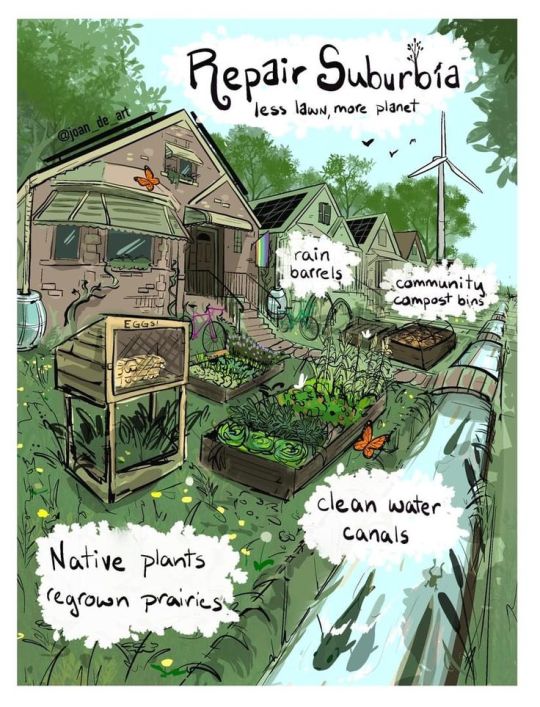
Little vision for a more beautiful, sustainable, tactile future.
1K notes
·
View notes
Text
Little message for any Americans who come across my blog:
REJECT YOUR HOMEOWNER’S ASSOCIATION!!!!!!
GROW NATIVE PLANTS AND/OR CORN ON YOUR FRONT LAWN!!!!!!!!
Not saying you HAVE to! But HOAs are still a stupid idea anyway.
🔥🔥🔥🔥🔥🔥🔥🔥🔥🔥🔥🔥🔥🔥🔥🔥🔥🔥🔥🔥🔥🔥🔥🔥🔥🔥🔥🔥🔥🔥🔥🔥🌽🌽🌽🌽🌽🌽🌽🌽🌽🌽🌽🌽🌽🌽🌽🌽🌽🌽🌽🌽🌽🌽🌽🌽🌽🌽🌽🌽🌽🌽🌽🌽🌽🌽🌽🌽🌽🌽🌽🌽🌽🌽🌽🌽🌽🌽🌽🌽🌲🌲🌲🌲🌲🌲🌲🌲🌲🌲🌲🌲🌲🌲🌲🌲🌻🌻🌻🌻🌻🌻🌻🌻🌻🌻🌻🌻🌻🌻🌻🌻🏳️⚧️🏳️⚧️🏳️⚧️🏳️⚧️🏳️⚧️🏳️⚧️🏳️⚧️🏳️⚧️🏳️⚧️🏳️⚧️🏳️⚧️🏳️⚧️🏳️⚧️🏳️⚧️🏳️⚧️🏳️⚧️🏳️🌈🏳️🌈🏳️🌈🏳️🌈🏳️🌈🏳️🌈🏳️🌈🏳️🌈🏳️🌈🏳️🌈🏳️🌈🏳️🌈🏳️🌈🏳️🌈🏳️🌈🏳️🌈🇮🇪🇮🇪🇮🇪🇮🇪🇮🇪🇮🇪🇮🇪🇮🇪🇮🇪🇮🇪🇮🇪🇮🇪🇮🇪🇮🇪🇮🇪🇮🇪🇦🇲🇦🇲🇦🇲🇦🇲🇦🇲🇦🇲🇦🇲🇦🇲🇦🇲🇦🇲🇦🇲🇦🇲🇦🇲🇦🇲🇦🇲🇦🇲(okay that’s enough flags)
And if you can’t do that. Defy them in any way you can. No matter how small it may be.
FUCK HOAs!
HOAs can eat shit!
Feel free to reblog the shit out of this one if you wish!
Also please reblog my posts on sending aid to the Armenians and the Assyrian people too! They’re on my blog.
#personal stuff#dougie rambles#political crap#for any yanks out there#anti homeowner association#fuck the HOA#housing#homeowner association#anti lawn#anti mowing#fuck HOAs#rewilding#homeowners association#corn#reblog this#anti HOA#no more mowing#pollinators#tenant rights#anti landlords#fuck landlords#neighbourhood associations#kill your lawn#lawn#fuck lawns#signal boost#signal b00st#signal boooooost#please reblog this#reblog the shit out of this
2K notes
·
View notes
Text

#nature photography#nature#nature photographer#photographers on tumblr#outdoors#nature lover#rewilding#trees#planet earth#mother nautre#stillness speaks#knepp estate
523 notes
·
View notes
Text

Never piss off an archdruid, lest they decide to rewild your house.
335 notes
·
View notes
Text
instagram

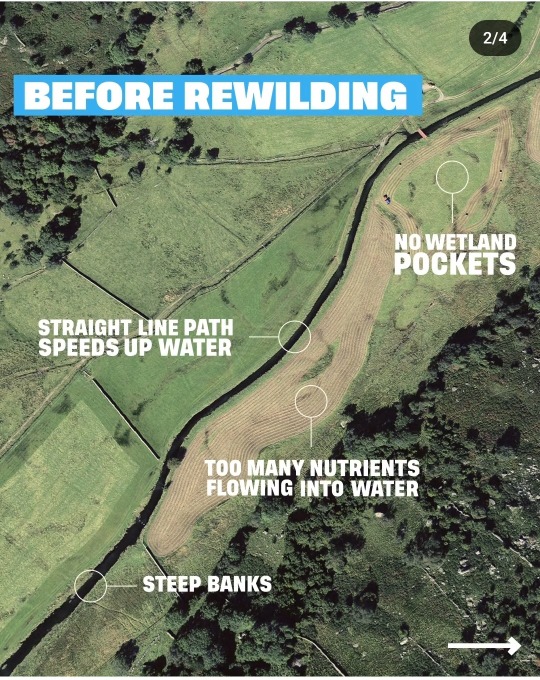
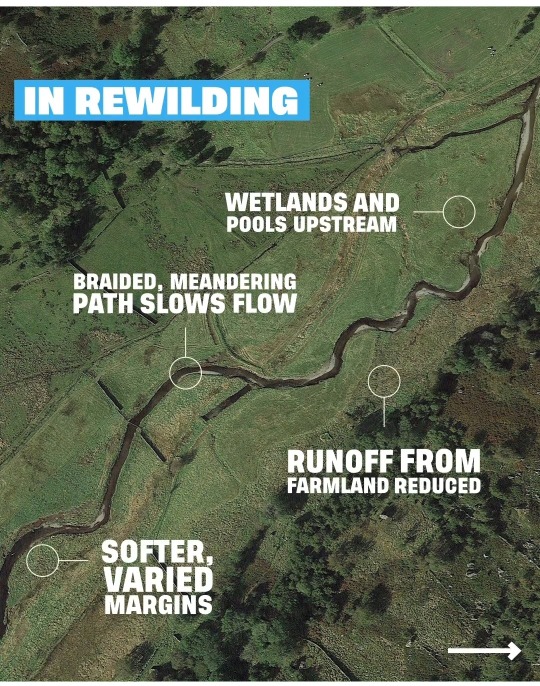
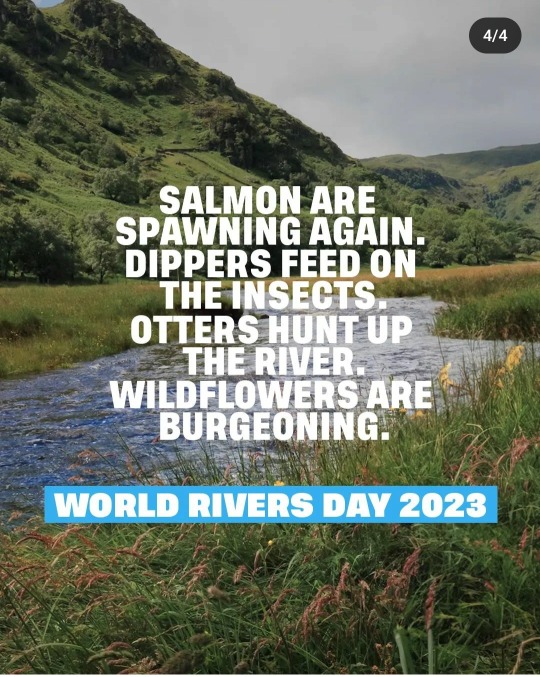
Post by Rewilding Britain:
Rewilding Britain
49,391 followers
7h
What rivers are supposed to look like ✨
Many of us love our local rivers. We walk alongside them, sharing our space with the creatures that call them home and sometimes even swim in them. Sadly, many of them now swing from drought-scorched channels to overflowing floodwater. They're ecological dead zones thanks to relentless sewage releases and agricultural runoff. Our waterways deserve better.
There is hope, and rewilding is leading the way. These Google Earth images, first highlighted by the BBC, show the dramatic transformation of Swindale Beck by Wild Haweswater in the Lake District. Long ago forced into a steep-sided channel, the stream was prone to flooding, had poor water quality and had lost the gravel on which many fish depend to lay their eggs.
Now it’s been allowed to re-wiggle, meandering over the valley floor. But it’s not just the river that needs help: to create healthier rivers, the area surrounding a river system must also be restored. This can include adding wide ‘buffer strips’ around a river, or a focus on landscape-scale restoration to put back wetlands and woodlands – in other words, rewilding.
The evidence is clear to see: salmon are spawning again. Dippers feed on the insects. Otters hunt in the river. Wildflowers are burgeoning. Life is returning.
#rewilding #WorldRiversDay
374 notes
·
View notes
Text
I spent the eclipse ripping up garlic mustard at the local trail and filling the holes left behind with native flower seeds I collected last winter as a way to honor the land I live on (and so every time I walk by the flowers I can remember the cool eclipse)
140 notes
·
View notes
Text
In 2022, something happened in Britain for the first time in 6,000 years. Deep in the Kent countryside, a wild European bison calf was born as part of the Wilder Blean rewilding project. The last time wild European bison roamed Britain’s landscapes was after the last Ice Age, some 10,000 years ago, so it’s no wonder the calf’s arrival caused a stir. European bison were once a common sight across most of Europe. As the largest herbivore to roam the continent, European bison could be found from France all the way to the tip of the Black Sea in the Ukraine. The fossil record tells us that European bison have been roving the continent since the end of the Paleolithic Ice Age, with the earliest fossils dating back to 9,000 BC.
Now, bison are bouncing back. They have experienced a 166-fold increase in their population in the last 50 years. And these rates of return are not solely the reserve of the mighty bison. Other wild European mammals are also making a roaring comeback, and the speed of their resurgence suggests that wider, rapid natural regeneration is possible with multiple ecological, and therefore human benefits.
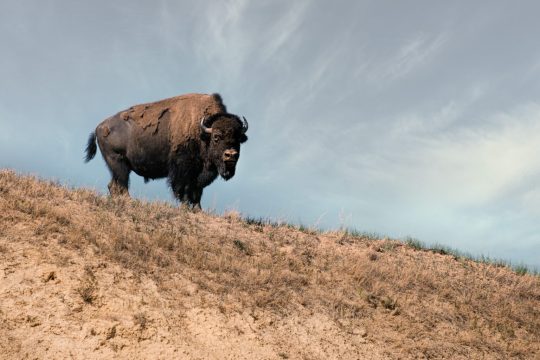
From 1960 to 2016, Eurasian beaver (Castor fiber) populations have ballooned 167-fold, from just a few thousand at the start of the 20th century to over 1.2 million wild beavers today. Grey seal populations have also grown by 6,273 percent and the population of Alpine ibex has risen by 417 percent. Eurasian badger populations have doubled, while Eurasian otter populations have tripled.
While these impressive rates of recovery are not reflected across all of Europe’s 250 wild mammal species, they do provide some evidence-based hope that wild mammals can once again flourish across Europe’s diverse and varied landscapes with the right support and policies in place.
The big picture
... Over the last 50 years the fate of some wild mammals across Europe has shifted. Some populations have experienced a rapid and dramatic increase over the last half century, reversing millenia of decline and offering fresh hope that nature can recover – if it’s given the chance.
Brown bear numbers have risen by an average of 44 percent between 1960 and 2016, while the Iberian lynx has seen its population grow by 252 percent. Humpback whales have seen their numbers rise by 37 percent between 1986 to 2016, while the pine marten – a natural predator to the invasive grey squirrel – has seen its population grow by 21 percent from 1986 to 2016. Some reptile species, such as the loggerhead turtle, have seen its numbers grow by 68 percent over the last 40 years.
The most impressive bounce backs, however, are among the beaver and bison – two species that play vital roles within ecosystems. Both beaver and bison populations have seen 167-fold increases over the last 50 years. These mammals help support a rich mosaic of habitats and biodiversity. Wild bison, for instance, trample and wallow in the soil and sand to create niche habitats for plants, insects and lizards, while also playing an important role in the dispersal of seeds.
Context and background
The impressive recovery rates over the past 50 years have been possible due to a shifting cultural and economic context. Alongside this, there is a growing scientific consensus of the importance of small and large mammals for sustaining biodiversity and helping ecosystems flourish. The sheer diversity of mammals, both in terms of their morphology and their roles within ecosystems, is testimony to the functions they perform. From the tiny bumblebee bat, which weighs just two grams, to behemoth blue whales, weighing in at 150,000 kilograms, mammals really do come in all shapes and sizes.

Wild mammals play a variety of leading roles within an ecosystem, from dispersing seeds, pollinating plants and regulating insect populations, to reducing disease transmission and creating niche habitats for other species. The European bison reintroduced to Kent in the UK have already started clearing paths through undergrowth, ripping the bark off trees, and wallowing around in the mud to make space for seeds and other habitats – natural processes that humans would struggle to replicate. Bison and other large herbivores are often labelled ‘ecosystem engineers’ for this very reason – they shape and manage the land they reside on.
Some species of mammals – such as the magical beaver – are considered keystone species due to their ability to shape the ecosystems around them, creating entirely new habitats through building dams where fish, birds and all manner of species can thrive. Other mammals, like bats, act as indicators of healthy and functioning ecosystems. Between 1974 and 2016, Geoffroy’s bat populations have increased 53-fold across Europe.
Wild mammals also have a role to play in reducing the damage and destruction wrought by climate breakdown. In the temperate climate of Europe, large mammals have been proven to reduce the risk of forest and wildfires by creating gaps in vegetation through grazing and trampling. In the summer of 2022, wildfires ravaged Europe, burning the second-largest area on record. As global temperatures continue to rise, wildfires will increase in their frequency and severity. Bolstering the population of large mammals could provide a useful tool in the fight against fires alongside deep and immediate cuts to emissions...
What’s more, the grazing of wild mammals can also help retain the carbon stability of soil over long periods of time. Soil contains vast amounts of carbon – more than all plants and the atmosphere combined – which makes ensuring its stability important for both climate efforts and environmental conservation. Mammals like the alpine ibex, which have seen their numbers grow by 417 percent from 1975 to 2016, are highly effective at stabilising soil carbon within grazing ecosystems.
-via Rapid Transition Alliance, March 29, 2023
#beaver#bison#mammal#ecosystem#ecology#endangered species#europe#united kingdom#kent#wildfires#rewilding#ecosystem restoration#good news#hope#hope posting
2K notes
·
View notes
Text
I wanted to make a post with some links to explain why afforestation (planting trees to stop desertification; the change of environments into deserts) is not always the best approach to take.
So lately on social media there's been a lot of misinformation of like tree planting = always good. But the problem with this approach/view is it gives companies and governments the excuse to use forest monocultures (millions of one or few tree species) to fund logging industries instead of taking the time to develop an ecosystem of native plants.
(Link to real life example:)
youtube
Ecosystems undergo ecological succession where bare land is converted to ecologically productive (lots of different organisms with different roles in the ecosystem, nutritious soil) and biodiverse (lots of different species) land. It also takes a long time for this to happen.
See these:
youtube
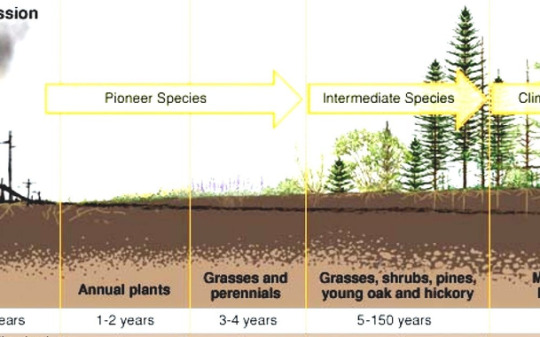
Here's some links a video explaining why just planting trees ultimately doesn't work in the long term if done wrong:
youtube
And here's some links to videos explaining how it can be done right when we actually look at the evolutionary history of the ecosystem and ecology of it and restore it using native species and less rigid attitudes.
youtube
youtube
youtube
youtube
youtube
Habitat restoration is a HUGE branch of conservation biology and is constantly causing disagreements in scientific communities because its a new science and there are so many different branches of biology (e.g. ecology, evolutionary history and ecology, geology, etc) we need to consider and so many old attitudes that need revising in some conservation techniques.
This is only a guide to trees alone in habitat conservation as well, there are so many different habitats other than forest that need to be conserved as well as forests, particularly wetlands which are so abundant in biodiversity and ecosystem services (things ecosystems can do for the world essentially, unfortunately the focus in research can be on what ecosystems can do for us).
I've also not looked much at how this has been done outside of official organisations and I wanna look more at conservation projects ran illegally but I'm bad at finding information lol
#wow i expressed an opinion online without panicking#now to bury my head in the sand if i get criticised#ecology#trees#tree ecology#conservation biology#habitat restoration#rewilding#wildlife#tree conservation#evolutionary ecology#mosscore#forestcore#forests#Youtube
2K notes
·
View notes
Link
“There’s a huge untapped potential to consider conserving animals as a climate solution. If you do some of the rough calculations, the numbers rival those of what the IPCC is right now promoting in terms of converting everything to solar or wind generation...the numbers are in the same ballpark”
This is called called “trophic rewilding”--many animal species naturally cycle carbon into the soil just by living their lives and restoring these species to their natural range can turn their ecosystems back into carbon sinks.
“Fortunately, we have the technology to scrub CO2 from the atmosphere. It’s called nature.”
Looking at the list of environmental issues--pollution, climate change, species extinction, etc.--can feel overwhelming, but the reality is that nearly all of these issues are intimately connected. This is just one of many examples of how working on one issue also helps solve the others; if you conserve wildlife and restore habitat it also helps mitigate climate change.
(quotes from Oswald Schmitz)
#rewilding#wildlife#trophic rewilding#climate change#global warming#environment#hope#good news#animals#conservation#biodiversity#ecosystems#habitat#habitat restoration#hopepunk#postivity#ecoanxiety#climate anxiety#environmental despair#environmental grief
888 notes
·
View notes
Text
I saw a pileated woodpecker on my walk today and heard its call several times when I was in the back yard. so exciting i've never seen one of those at home
There are SO many birds. Yesterday watched two Tree Swallows in the back yard having their aerial courtship and a Song Sparrow sitting on the back porch singing. It seems like I hear so many more bird songs than ever before, many unfamiliar. There are loads of bluejays, cardinals, grackles, starlings, and mourning doves, and lots of birds I don't recognize.
There was a bird with a bright white belly/chest doing some kind of little dance outside this morning, and right now I'm watching yet another variety of sparrow (so many sparrows!) sitting on the edge of the porch. I heard several downy woodpecker calls too.
Could it be everything I've been planting that is causing the birdsplosion? Or the fact that we haven't mowed yet this year? The total amount of leafy and woody cover has increased only modestly (because the new trees and shrubs are still baby) but the plant biodiversity has increased dramatically.
I protected the current garden patch from clearing and instead of letting the dirt lie bare, piled leaves on top of it. The garden patch has been a favorite spot for the birds all winter long, but especially now; there's always a sparrow or cardinal there.
I've also protected the meadow from disturbance, letting the "weeds" grow up while introducing wildflowers and trying to kill or reduce the turf grass bit by bit, and the strangest thing has happened: the soil has improved very noticeably in those areas. The soil underneath the thickets of asters has become much softer and lighter, whereas in areas that are covered with overgrown turf grass, it's the same dense heavy clay as before.
And the number of earthworms is incredible. I remember a time when there was not a single earthworm anywhere in the area that is now the meadow. It was a garden patch used by the guy that lived here before, and we tilled it every year without seeing a single earthworm. Ever. Now I can hardly sink a shovel into earth there without finding 3-4 earthworms immediately???
Just a year or two ago, I would have scrambled to get my phone to take a picture if a bird landed on our porch; now not a single day goes by without 3 or 4 birds visiting, whether my adorable finch couple, or a Downy Woodpecker, or robin, or a FAT wren.
The change is so dramatic. Like that thing that happened when wolves returned to Yellowstone—a trophic cascade?
I think that somehow, all my caretaking activities have increased the insects and invertebrates, which in turn have increased the birds. There's been a great increase in butterflies, at least, and it's only early April.
CREATURES!!!
#native plant gardening#plants#meadowscaping#rewilding#kill your lawn#anti lawn#no lawns#food not lawns
641 notes
·
View notes